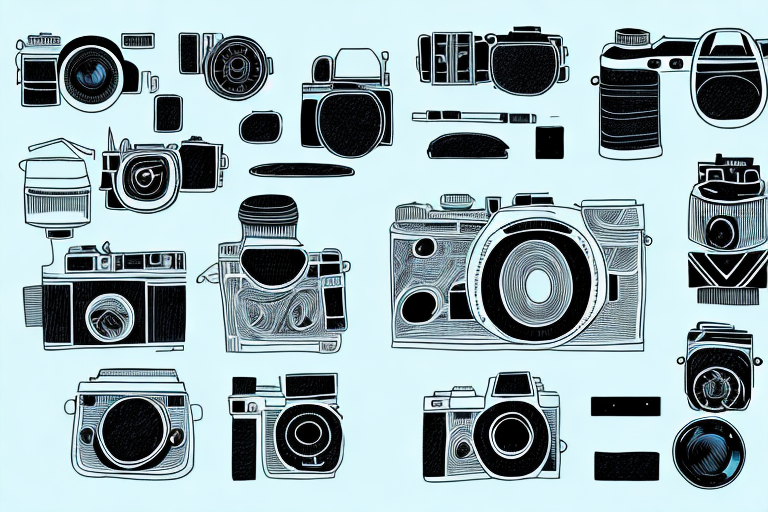Are you a photography enthusiast looking to upgrade your camera gear? If so, you’ve come to the right place. In this comprehensive guide, we will explore everything there is to know about full frame cameras – from their advantages to key factors for consideration, as well as the top models available on the market. By the end of this article, you’ll be equipped with all the information you need to make an informed decision on your next full frame camera purchase. So, let’s dive in!
Understanding Full Frame Cameras: A Comprehensive Guide
Before we delve into the specifics of the best full frame cameras, let’s first understand what exactly makes them so special. Full frame cameras, unlike their crop sensor counterparts, have a sensor that is the same size as a 35mm film negative. This larger sensor size allows for greater light gathering capabilities, resulting in higher image quality, better low-light performance, and increased dynamic range. Additionally, full frame cameras offer a shallower depth of field, allowing photographers to achieve stunning background blur and bokeh effects.
Moreover, full frame cameras provide a wider field of view, as the focal length of lenses remains the same as intended. This inherent advantage makes them perfect for wide-angle photography, landscape shots, and architectural images. It’s worth noting, though, that due to the larger sensor size, full frame cameras tend to be bulkier and more expensive than their crop sensor counterparts.
Another advantage of full frame cameras is their ability to capture more detail. With a larger sensor size, full frame cameras can capture finer details and produce images with higher resolution. This makes them ideal for photographers who need to print their images in large formats or for those who require extensive cropping without sacrificing image quality.
In addition to their superior image quality, full frame cameras also offer better control over depth of field. The larger sensor size allows for a wider range of aperture settings, giving photographers more creative control over the focus and blur in their images. This is particularly beneficial for portrait photography, where a shallow depth of field can help to isolate the subject and create a pleasing background separation.
The Advantages of Full Frame Cameras
When it comes to the advantages of full frame cameras, the first and foremost benefit is their superior image quality. The larger sensor size allows for greater detail, better color accuracy, and reduced image noise, particularly at higher ISOs. This means that your photos will come out sharper and cleaner, even in challenging lighting conditions.
Another significant advantage of full frame cameras is their enhanced low-light performance. The larger pixels on the sensor can capture more light, resulting in better image quality with less noise in dimly lit environments. This is especially important for photographers who often shoot in situations such as concerts, weddings, or nighttime street photography.
Additionally, the wider field of view offered by full frame cameras is highly advantageous for certain genres of photography such as landscape, street, and architectural photography. The ability to capture more of the scene without having to stand too far back is invaluable for creating impactful and visually stunning images.
Furthermore, full frame cameras also offer better dynamic range compared to smaller sensor cameras. The larger sensor allows for a wider range of tones to be captured, resulting in more detail in both the highlights and shadows of an image. This is particularly beneficial in high-contrast situations, such as capturing landscapes with bright skies and dark foregrounds.
In addition to their superior image quality, full frame cameras often have more advanced autofocus systems. With a larger sensor, these cameras can accommodate more autofocus points, allowing for greater precision and accuracy when tracking moving subjects. This is especially advantageous for sports and wildlife photographers who need to capture fast-moving action with sharp focus.
Key Factors to Consider When Choosing a Full Frame Camera
Now that we understand the advantages of full frame cameras, let’s discuss the key factors you should consider when choosing one that suits your needs. Firstly, it’s essential to evaluate your budget and determine how much you are willing to invest. Full frame cameras tend to be more expensive than crop sensor cameras, so finding a balance between your desired features and budget is crucial.
Next, it’s important to consider the camera’s resolution. While resolution isn’t the sole determining factor for image quality, it does play a role in capturing fine details. Higher resolutions can be particularly beneficial for photographers who plan on printing their work in large formats or those who require extensive cropping capabilities.
Another aspect to consider is the camera’s autofocus system. Fast and accurate autofocus is crucial, especially for capturing moving subjects or engaging in genres such as sports or wildlife photography. Look for a camera with advanced autofocus features, such as a large coverage area and reliable subject tracking.
Ergonomics and user interface should also be taken into account. Consider the camera’s design, button layout, and menu system. A camera that feels comfortable in your hands and has an intuitive interface will greatly enhance your shooting experience.
Finally, don’t forget to research the range and availability of compatible lenses for your chosen camera. Lenses are a significant investment, and ensuring that your desired focal lengths and types of lenses are available will guarantee that you can achieve your desired photographic goals.
Additionally, it’s worth considering the camera’s low light performance. Full frame cameras generally have larger sensors, which allow for better light gathering capabilities. This can result in cleaner images with less noise, especially in challenging lighting conditions such as indoor or nighttime photography.
Furthermore, the camera’s video capabilities should be taken into account if you plan on using it for videography. Full frame cameras often offer higher video resolutions, such as 4K, and better dynamic range, which can result in more cinematic footage. Look for features like in-body image stabilization and microphone inputs if video is an important aspect of your photography.









